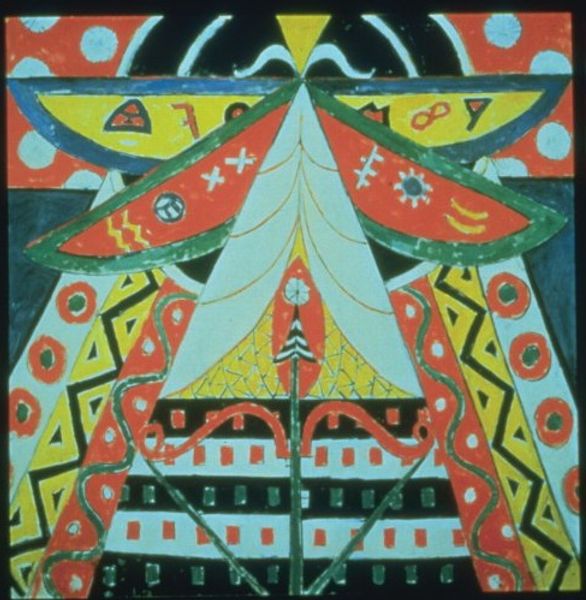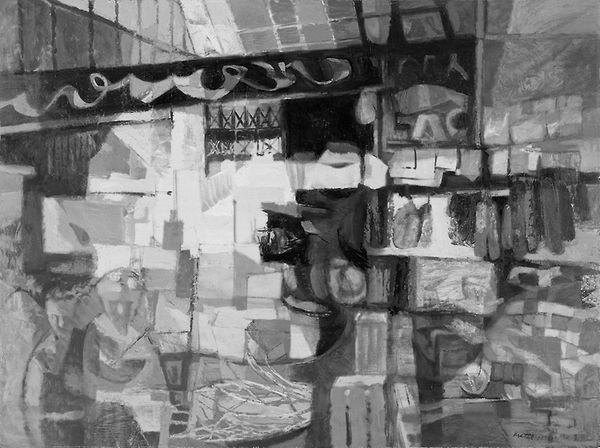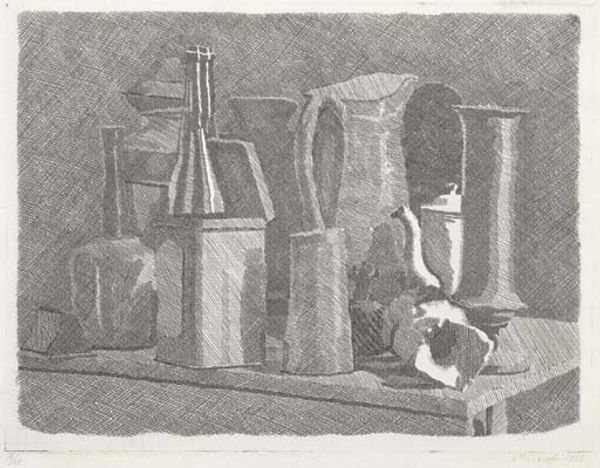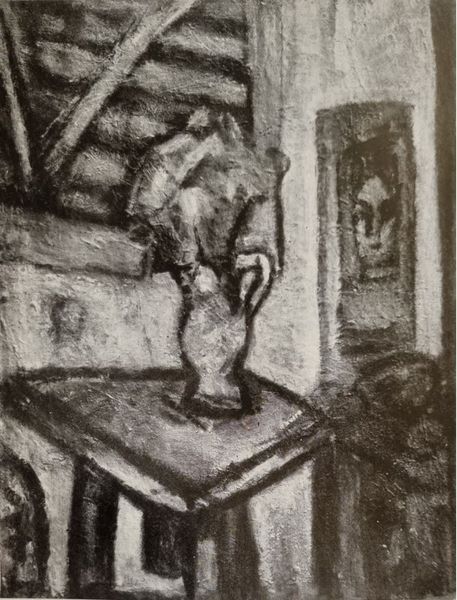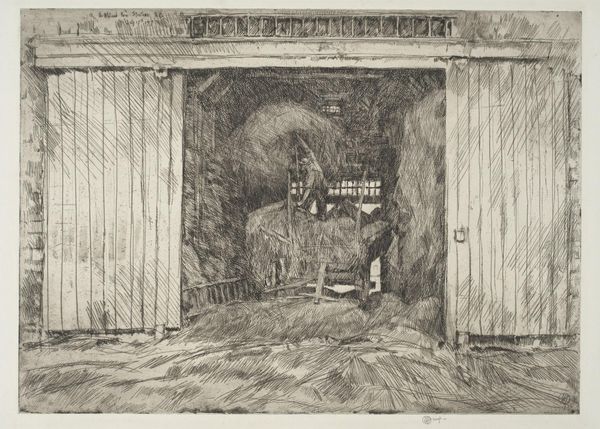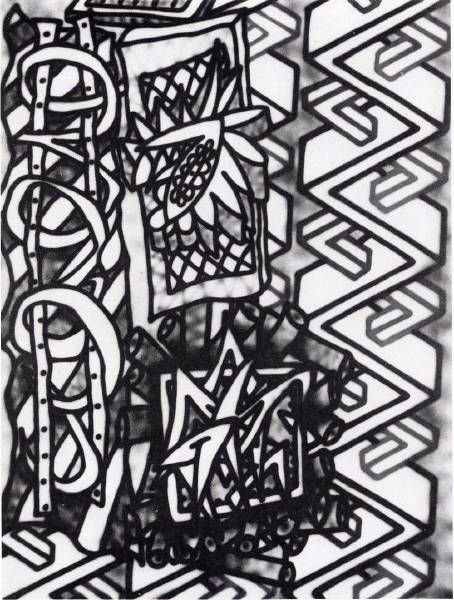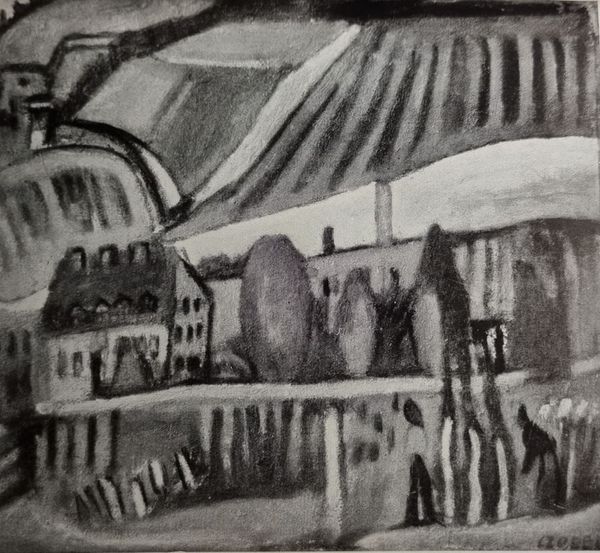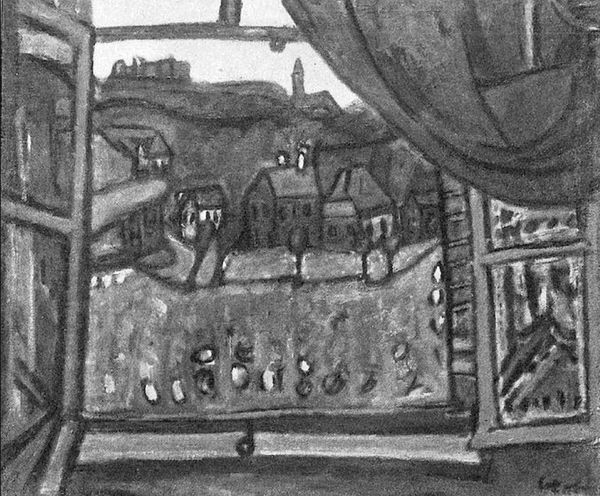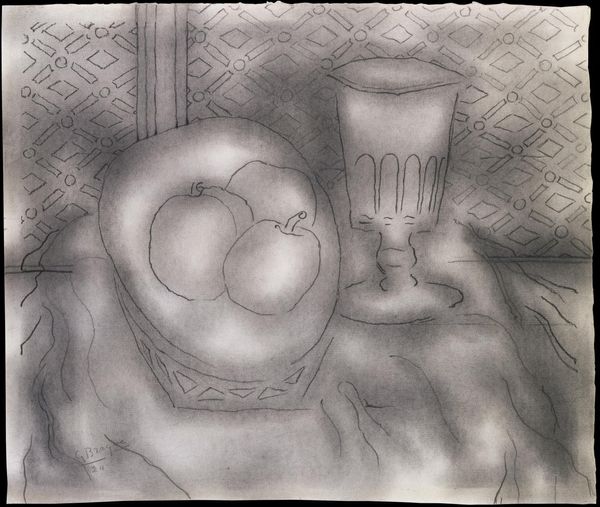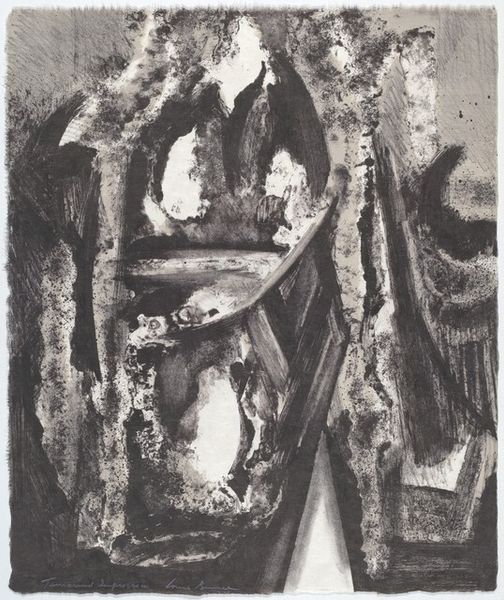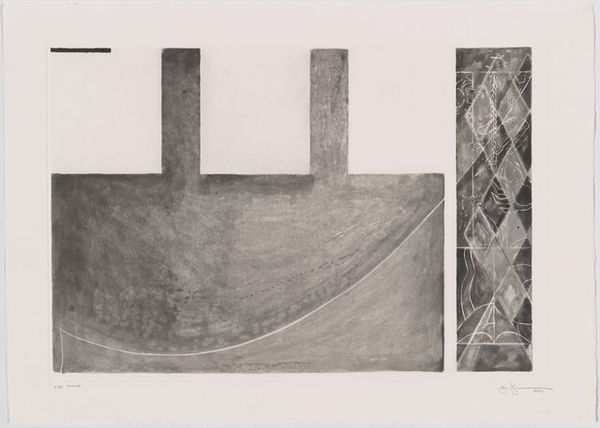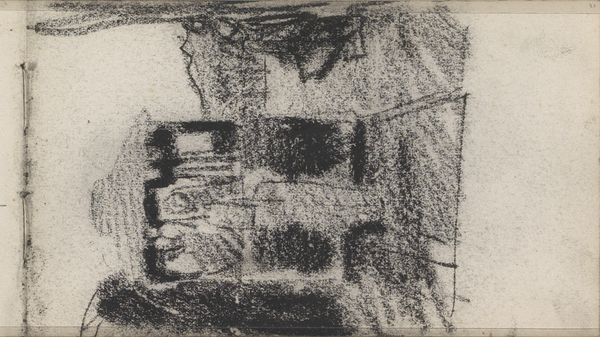
drawing, textile, pencil
#
drawing
#
pencil sketch
#
textile
#
sketch
#
pencil
#
symbolism
Copyright: Public domain
Editor: So this is Nicholas Roerich's "Study of scene design for 'Tristan and Isolde'," created in 1912. It looks like a pencil sketch, maybe on textile? I’m struck by how the patterns on the fabric seem to almost enclose the figures within the space. What’s your take on this? Curator: From a materialist perspective, the rendering in pencil, supposedly on textile, immediately collapses traditional boundaries. Is this high art or craft? Was this fabric repurposed after its role in set design, or created specifically for it? What's the relationship between the raw materials, like the pencil and textile, and their transformation through artistic labor? Editor: That’s a great point! I hadn't considered the labor involved. The textiles, the sketching... Curator: Exactly. The "sketch" itself points to the means of production – the preparatory work. Think about who produced the textiles and how they would have been circulated. And how this sketch would influence future making on a large scale. Editor: Right. Set design requires many hands. It isn't solitary creation... Curator: Furthermore, notice the stage setting: what statement is being made through these textile choices about class and labor? Roerich wasn't simply decorating; he was building an environment out of materials laden with social and economic meaning. What were Wagner's operas saying at the time about class dynamics in his own operatic work? Editor: This really makes me reconsider how scenery contributes meaning – how the materials themselves carry a message beyond the visual representation. I will definitely pay more attention to these details going forward. Curator: Precisely. By investigating the raw materials and methods employed in creation, a whole social and cultural world opens up.
Comments
No comments
Be the first to comment and join the conversation on the ultimate creative platform.
